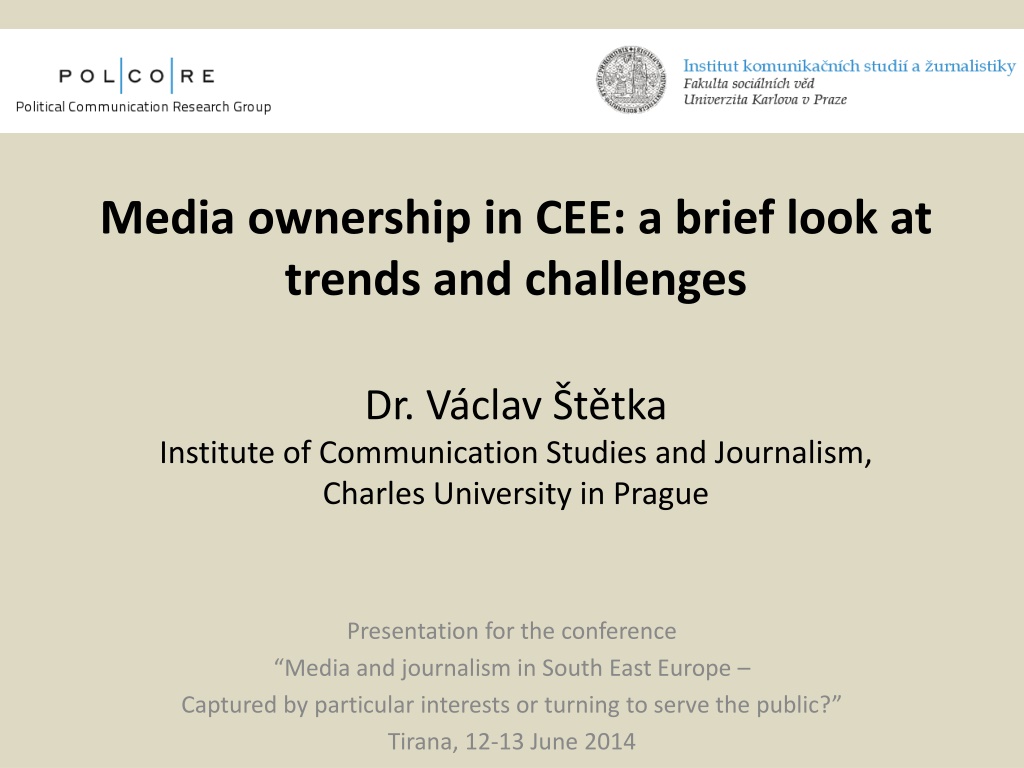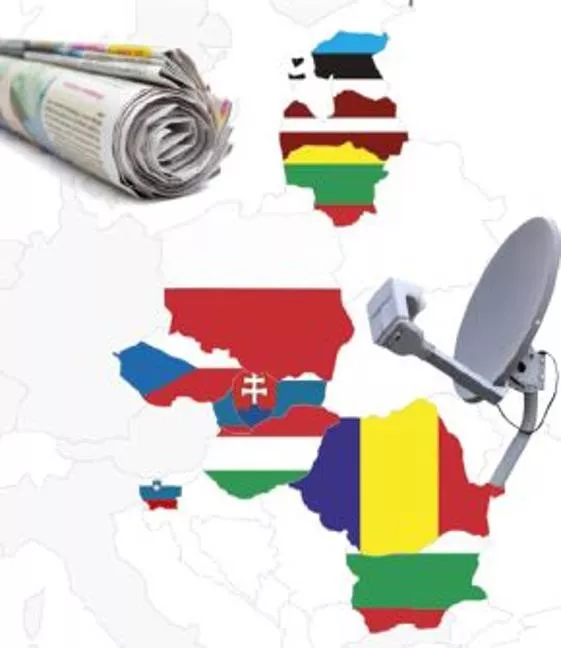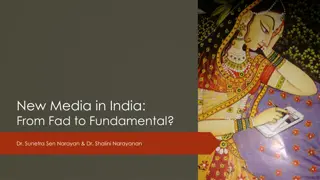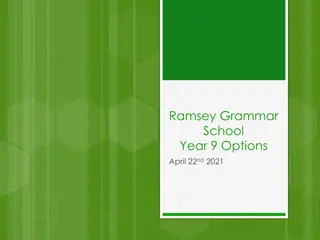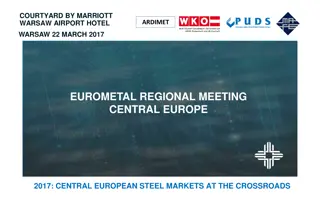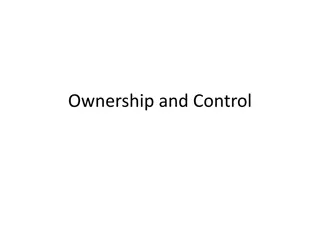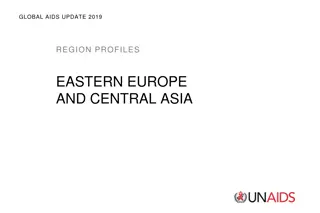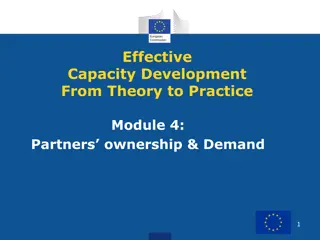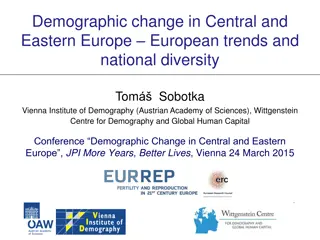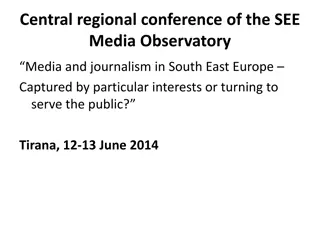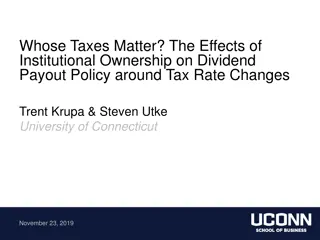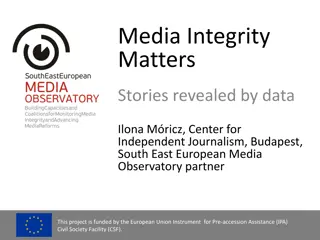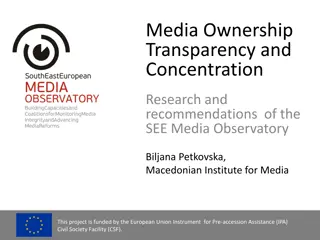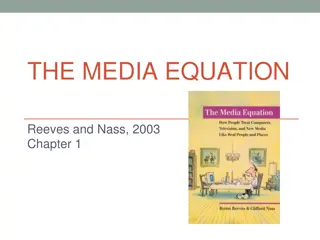Challenges and Trends in Media Ownership in Central and Eastern Europe
Trends in media ownership in Central and Eastern Europe (CEE) show diminishing Western ownership post the 2008/09 economic crisis, with an increase in local business tycoons investing in news media. The intertwinement of media, business, and politics is growing, leading to concerns about autonomy. The shift from profit-seeking to influence-seeking poses challenges to sustaining quality journalism, with a transition towards new models and outlets.
Download Presentation

Please find below an Image/Link to download the presentation.
The content on the website is provided AS IS for your information and personal use only. It may not be sold, licensed, or shared on other websites without obtaining consent from the author. Download presentation by click this link. If you encounter any issues during the download, it is possible that the publisher has removed the file from their server.
E N D
Presentation Transcript
Media ownership in CEE: a brief look at trends and challenges Dr. V clav t tka Institute of Communication Studies and Journalism, Charles University in Prague Presentation for the conference Media and journalism in South East Europe Captured by particular interests or turning to serve the public? Tirana, 12-13 June 2014
Media and Democracy in Central and Eastern Europe (2009-2013) 10 new EU post-communist member states Focusing at news media: broadcast, print, online Investigating the relationship between quality of democracy and quality of media in countries of CEE Methodology: semi-structured elite and expert interviews (over 300) document and secondary data analysis data modelling http://mde.politics.ox.ac.uk
Main trends in media ownership in CEE Diminishing presence of Western ownership, following the 2008/09 economic crisis Wave of departures of foreign owners from most CEE markets; de-Westernization of media ownership Rise of specific type of media ownership local business tycoon / oligarch investing into news media Increasing intertwinement of media, business and politics; media becoming less autonomous Czech Republic: Andrej Babi businessman, billionaire -> since 2011 leader of new political party > since 2013 media mogul -> since 2013 Deputy Prime Minister Growing practices of instrumentalization of media by the (new) owners to promote their business/political interests Commercial media weakened by the crisis, by declining readership, by audience/market fragmentation
Western-style media business model is becoming an exception rather than a rule in most CEE countries; media investment as a political strategy (not for business/profit) Transition from seeking profit to seeking influence Old commercial models are failing; new ones have not been found yet Challenge: ensuring sustainability & independence of quality journalism Quality/investigative journalism often forced to seek refuge outside of the scope of market economy Public service media (wherever still relevant) Foundation- or community-based online outlets Hope: the audience?!
Thank you! stetka@fsv.cuni.cz http://www.polcore.cz
